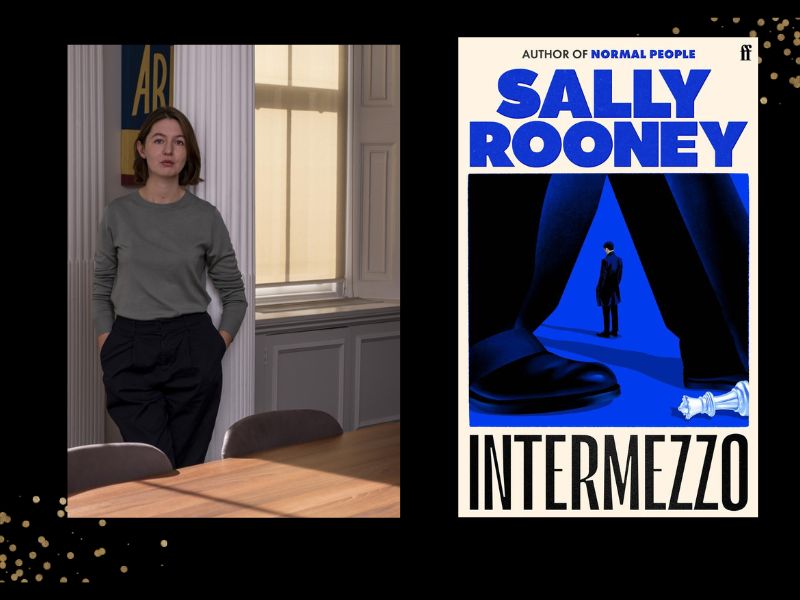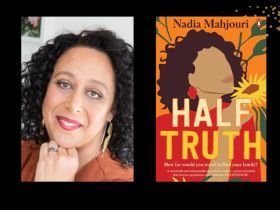Following the popularity of television show The Queen’s Gambit, Sally Rooney’s chess themed latest release, Intermezzo, lives up to the hype and easily outshines her previous international bestsellers, cementing her as one of the most influential and successful modern Irish authors, despite her continued reluctance to embrace her growing fame and reputation.
Intermezzo follows two brothers, Ivan and Peter, in the year following the death of their father. Ivan is a 22-year-old socially awkward competitive chess player, while Peter is in his 30s and a successful human rights lawyer in Dublin. On the outside, they could not be more different, and indeed they do not get along. Yet they are both grieving, in their own way – and not only for the immediate loss of their father, but also for the many losses endured throughout the course of their lives, including the once-loving relationship they had with one another.
Entwined in Ivan and Peter’s story are the women in their lives – Naomi, a free-spirited college student on the verge of homelessness, who shares photos of herself online for money, and Sylvia, a highly respected college professor in her 30s left in chronic pain by a life-altering accident and unable to enjoy the physical pleasures of intimate relationships. Like the two brothers, these women are poles apart. What they do have in common is Peter.
Peter and Sylvia were in a serious relationship for many years before the accident, and their enduring connection and love continues on an intellectual and emotional level. For Peter, a physical desire for Sylvia has him wishing for their lives to go back to the way they once were, as he finds comfort in her steady and calm presence, and delights in their intelligent conversations. Not wanting to hold him back or rob him of life’s experiences, however, Sylvia has ended their romantic relationship – opening the door for Peter to date other, mostly unsuitable, women like Naomi.
Ivan, on the other hand, has not had much luck when it comes to the world of dating. That is, until he meets Margaret at a chess tournament in the country one weekend. A 36-year-old local arts centre manager, who has been separated from her alcoholic husband for many years, Margaret is recovering from her own turbulent past and coming to terms with a life she had not imagined for herself. Ordinarily someone who follows the rules she suddenly finds, “Life has slipped free of its netting. She can do very strange things now, she can find herself a very strange person”, as she begins a sensual and somewhat forbidden relationship with the charming young chess champion.
As their grief and relationships ebb and flow, Ivan and Peter are challenged in ways they could not have imagined and ideas of themselves and each other begin to crumble as decades of disappointments, doubts and pretence come violently bubbling to the surface. In particular, Peter’s intense need for acceptance and control comes under scrutiny, as the dark “spiritual loneliness” at his core is no longer able to be contained.
Rooney has a way of drawing us deeply into the lives of her characters, weaving internal and external dialogue in such a way that we have no choice but to embark on a journey of intimate discovery – thought by thought, conversation by conversation and layer by layer. We observe Ivan and Peter’s deepest fears, desires and neuroses unravel with each page and we come to understand their complex and messy humanity. It’s incredibly difficult not to become invested, even with less likeable characters like Peter.
Written in the third person, from the perspectives of Ivan, Peter and Margaret, each voice has a distinct tone and cadence, allowing the reader to not only observe their actions and words, but gain raw and painful insights into their feelings and personality. Chapter one, for example, presents Peter’s interrupted and erratic thoughts, peppered with a heavy dose self-doubt and judgement that is off-putting and irritating, but depicts his type-A personality to a tee.
Chapter two, in contrast, provides a much needed reprieve with Ivan and Margaret’s linear flow of internal dialogue. This switching between chapters and characters continues throughout the book, like a jarring dance that becomes smoother with practice.
For fiction and Rooney fans, reading chapter two may also conjure strong feelings of déjà vu. It’s here that we witness the coming together of Ivan and Margaret for the first time and you may feel as if you have met the characters and pictured the scene before. A quick online search will reveal that indeed this chapter was written as a short fiction piece – published by The New Yorker, where you can also listen to Rooney herself reading it!
According to interviews, the other characters and the rest of the book only came to Rooney after this first piece was written – a fact that provides an interesting insight into her writing and storytelling process, and may provide reassurance and hope to writers who are perhaps waiting for a good idea for a novel.
This feeling of profound familiarity also confirms the power of Rooney’s prose to create vivid, multidimensional characters, scenes and stories that seep deeply into the reader’s psyche and memory.
Read: Performance review: FUTURE, Trades Hall
Ultimately, Intermezzo presents grief and our human existence as a kind of middle place, an interlude on the way to somewhere better, or worse, where life is to be lived and not judged, no matter how imperfect or unexpected it may become.
It’s Rooney’s best book yet, in my opinion.
Intermezzo, Sally Rooney
Publisher: Allen & Unwin
Format: Paperback
Pages: 448 pages
Available: 24 September 2024
RRP: $34.99





